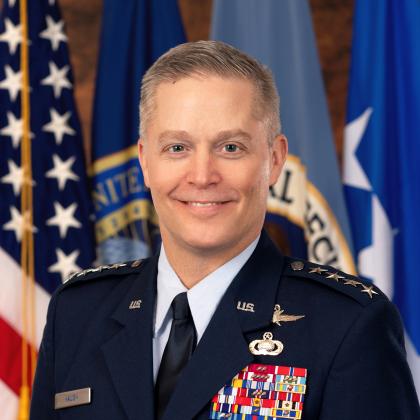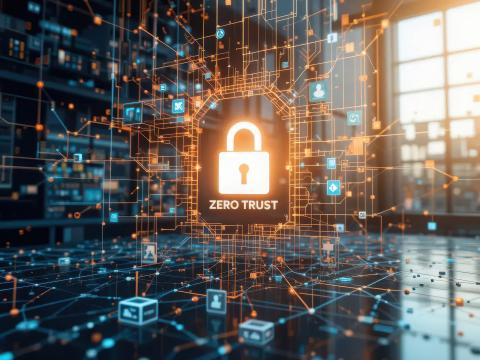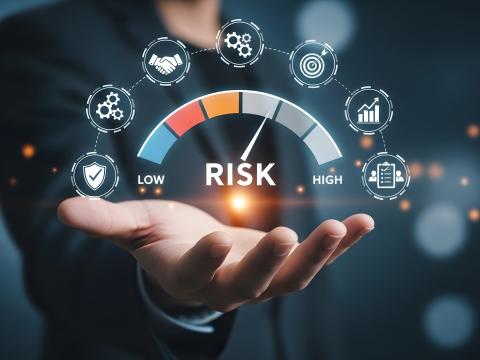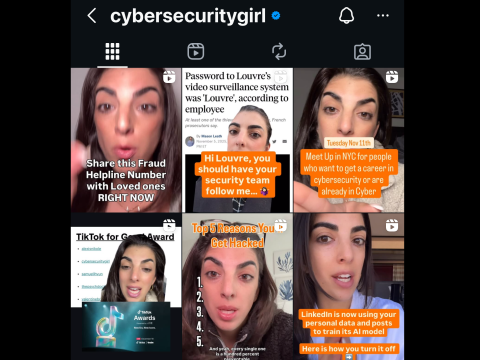Cyber Command 2.0 Eyes Creation of a Cyber Innovation Warfare Center
Gen. Timothy Haugh, who commands U.S. Cyber Command and directs the National Security Agency, told SIGNAL Media in an exclusive phone interview March 28, Cyber Command’s review known as Cyber Command (CyberCom) 2.0 will soon be delivered to U.S. Secretary of Defense Pete Hegseth and recommends the creation of a new Cyber Innovation Warfare Center.
The innovation center is one of three key focus areas aimed at developing the cyber workforce—talent management, training and delivering technical capabilities—with artificial intelligence being central to each.
For background, CyberCom 2.0 was a broad effort initiated by Haugh’s predecessor, Gen. Paul Nakasone. Haugh described it to lawmakers in a posture statement last year as an initiative to “develop a bold set of options to present to the secretary of defense on the future of USCYBERCOM and DoD [U.S. Department of Defense] cyber forces.”
To “maximize capacity, capability and agility,” the command is “addressing readiness and future force generation,” he said in the posture statement. “Provisions on readiness and force generation in recent National Defense Authorization Acts provide an opportunity for the department to define the next decade of growth, impact and warfighting outcomes by modernizing the cyber force, enshrine mechanisms for services/secretary like oversight and shape the future of USCYBERCOM.”
Hegseth asked the command to dramatically shorten its timeline for completing the review, which is now ready for approval from the Joint Chiefs of Staff and Hegseth, Haugh reported. “We’ve completed that staffing with strong support from the services, the combatant commanders and the Joint Staff, and now we’re working our way to the Joint Staff, and we expect to be able to get our final package to the secretary pretty eminently so that we can now get his direction. And as soon as we’ve received his direction, we’ll be prepared to move out whatever way he wants us to.”
The Cyber Innovation Warfare Center is inspired by the Constellation program, a partnership between CyberCom and the Defense Advanced Research Projects Agency (DARPA) to deliver new technologies to cyber warriors as rapidly as possible. The program benefits cyber warriors within the military services.
The commander is also due to present another posture statement to Congress this month. “And so, I will certainly be giving updates to Congress as part of my posture hearing in early April,” he said.
The review emphasizes the power of partnerships with the military services on the cyber workforce, with one key area focused on the management of “a highly qualified, low-density force to help inform what that should look like for cyber,” he said.
“We’ve got new partners in the services, and they’ve made great progress to be able to present to Cyber Command trained and ready forces. We really need to be able to ensure that we are taking our course to mastery. So, many of our recommendations are around talent management.”

We really see an opportunity to have more focused training and development to enhance the mastery of our force.
Some of the talent management issues include how to “put on the highest priority assignment that relates to the priorities for the secretary” and how to “reward those elements of our force that are improving their proficiency” so that the department is “ incentivizing mastery as part of what we do within our workforce.”
CyberCom 2.0 also addresses training and developing the force. “I have a responsibility within the Department of Defense to advance cyber training, but today, we do that largely through the expertise that we have on the staff and within our force. We don’t have a dedicated training and development center that allows us to really apply what we learn every day by operating in the domain,” he said, also stressing the need to develop and tailor training as the department adopts new technologies.
“One of those things today is we’ve had to do training as we rapidly integrate artificial intelligence. I should also have a place that helps us accelerate that curriculum development. We found ways to do it, but we really see an opportunity to have more focused training and development to enhance the mastery of our force,” Haugh elaborated.
"And then finally, we see the need for a Cyber Innovation Warfare Center that will allow us to enhance our partnerships. We have great partnerships today with teammates like DARPA and others within the department that deliver capability. We need to be able to expand those partnerships and to be able to deliver at speed and scale for the demands that we have when we are operating across cyberspace,” he added.
Haugh indicated that artificial intelligence is key to each focus area. “We see a clear path. We’ve seen the development domains. We know how to do it, and I have the authorities to do it. We just need the right talent capacity to be able to get after that problem. Those are the three big areas, and all of it is in the context of how we expand the implementation of artificial intelligence as part of our operation.”
Asked about Cyber Command’s efforts to build a cyber intelligence center, the general noted that Cyber Command and the National Security Agency partner together to provide relevant cyber intelligence to the rest of the department. And he revealed an intent to partner closely with Lt. Gen. Jeffrey Kruse, director, Defense Intelligence Agency (DIA), to enhance cyber intelligence. DIA delivers intelligence specifically on foreign militaries.
“When General Kruse came in as the new director of the Defense Intelligence Agency, he prioritized how DIA can become more involved and improve their expertise in cyber, so we’ve done pilot [programs] together that would allow us to leverage the capability, skills and authority of DIA as a contributor to Cyber Command as we support all the other commands. From my perspective, I want to partner with the Defense Intelligence Agency to be to grow capacity to enable cyberspace operations, not just for U.S. Cyber Command, but for all of the combatant commands as they think about threats and opportunities in cyberspace.”
He added that Cyber Command wants to take advantage of DIA’s expertise in foreign militaries. “One of the things that DIA does incredibly well across all of foreign military is understanding the order of battle of our adversaries. We really want to leverage the Defense Intelligence Agency and to integrate the preposition of cyber forces for our adversaries, consistent with all the other activities to give—not just for us but for all of the combat commands—an understanding of the risk from each adversary and how they would also modify their plans.”
When asked whether that would mean any organizational or mission changes for DIA, he indicated the details will need to be worked out. “This is a conversation we’ll have between Cyber Command, DIA and the department, which is how much investment would meet our needs and also meet the intent of Congress. And we're going to work that really close with Gen. Kruse.”






Comments